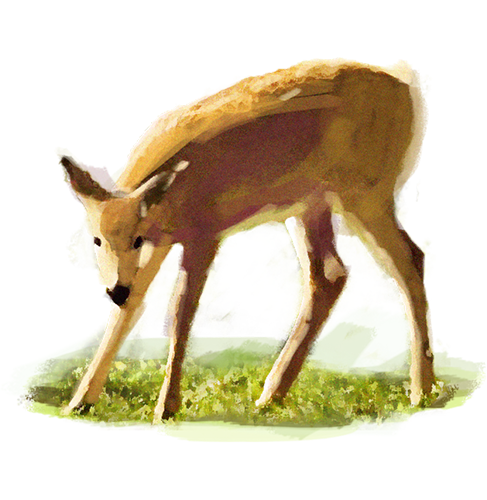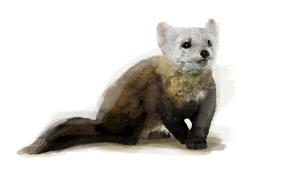Article
Five species of birds to discover in Quebec
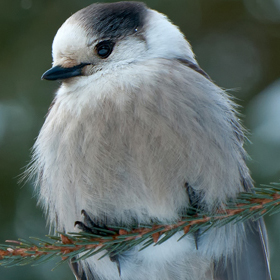
Recently voted Canada’s national bird in a contest run by Canadian Geographic magazine, the Gray Jay represents Canadians well! Resourceful, this small cousin of the crow spends time caching tidbits of food all over its territory. It uses its sticky saliva to glue mouthfuls of seeds to trees in order to build their food reserves for the winter. This stash even permits them to nest and raise their young as early as February…no need to wait for warmer weather!
Gray Jays can be found in boreal forests all over Canada. These curious birds are known to occasionally approach cross-country skiers in national parks such as Mont Tremblant.
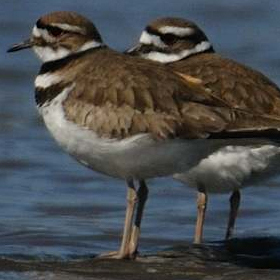
Of all of the theatrical displays wild animals can put on, that of the killdeer must be one of the craftiest. Because Killdeer build their well-camouflaged nests on rocky terrain, is not uncommon for predators to wander too close. Before the nest itself is spotted, a parent appears, dragging a wing and making a distress call. It seems gravely injured; an easy meal! The adult runs away, dragging a wing as if crippled. After luring the predator away from the nest, the killdeer makes an apparently miraculous recovery and flies off to safety!
This medium-sized plover can be observed alongside agricultural fields but can even be found in rocky areas near garden centers and parking lots. If you notice an adult that appears to have a broken wing, it can mean that you are too close to their nest and should step carefully away from the area to avoid disturbing it any further.
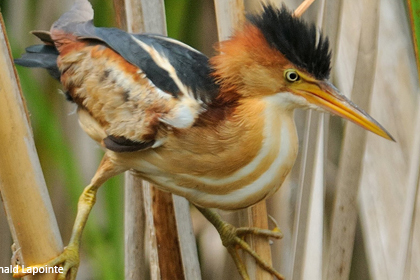
One of the smallest members of the heron family, the Least Bittern is a fascinating species to watch for those lucky enough to spot one. Only about 30cm long, they are much smaller than the more familiar Great Blue Heron, but this doesn’t stop them from being efficient predators. Quick reflexes, a spear-shaped beak and long toes to grip marsh vegetation above the water’s surface all combine to allow them to hunt small fish, frogs and insects in areas where the water is too deep for larger herons to wade.
Least Bitterns can be found in large marshes where the vegetation is dense enough to provide protection from predators. Protecting marshlands is thus vital to protecting this fascinating little heron.
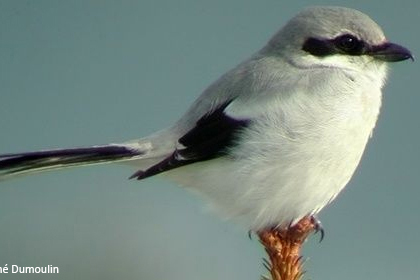
When carnivorous birds are mentioned, often our thoughts turn to birds of prey. The Northern Shrike, however, is a songbird that feeds on insects, rodents and even other birds. Without sharp talons to disable small animals, the shrike has evolved a clever technique. After capturing a meal using its sharp, slightly hooked beak, it will fly to a nearby tree and impale its prey on a branch or thorn. Barbed wire fences make a useful substitute if no suitable branch is available. If prey is abundant the shrike can stockpile multiple prey items in the same shrub…a grisly discovery for anyone who stumbles across it.
Most often spotted in the winter, shrikes can be seen perched in lone trees near open fields where prey is easily visible at a distance.
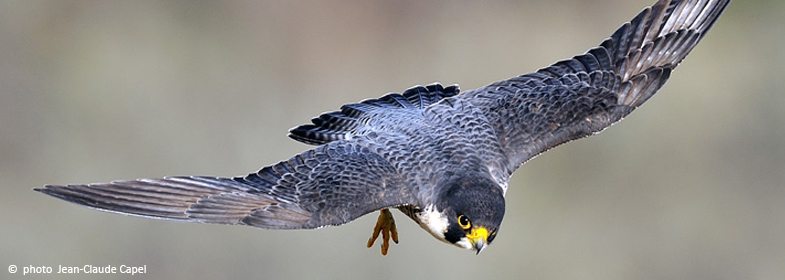
Did you know that the fastest animal on the planet can be observed right here in Montreal? No, there are no cheetahs in Quebec…we’re talking about the Peregrine Falcon! While not as fast on the ground, this falcon can reach speeds up to 360km/h in the air. Starting high in the sky, it accelerates towards the ground first by flapping its wings, then by tucking them against its body to become aerodynamic. This way it can dive, or stoop, at high speeds towards avian prey such as ducks or pigeons. Often the force of the impact alone is sufficient to kill its prey, which the falcon can then consume on the ground or safely up a tree.
Once critically endangered due to the widespread use of pesticides such as DDT, the peregrine falcon’s populations have rebounded in recent decades. Peregrines can be spotted atop large buildings in town centers or on bridges. To a falcon’s eyes, these artificial structures resemble the cliffs of its natural habitat, and large cities are often home to large populations of easy prey…pigeons!
